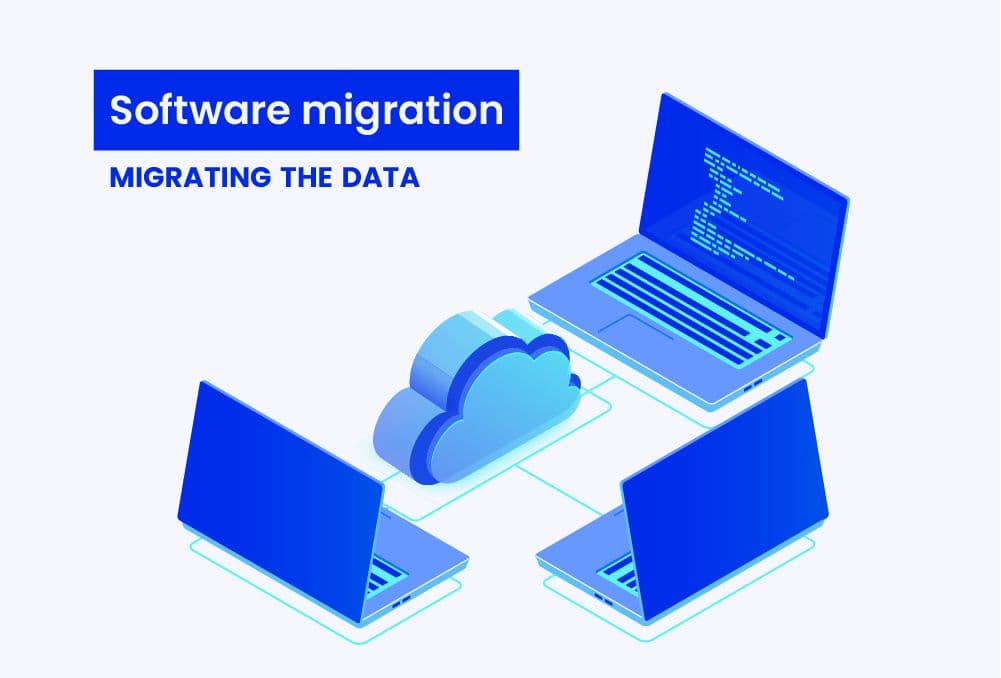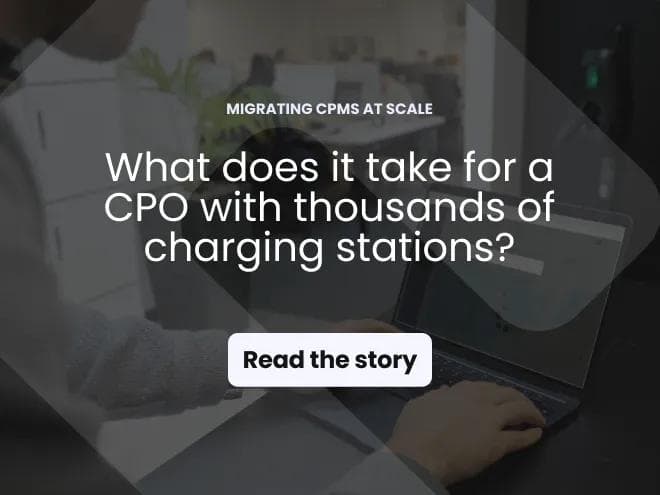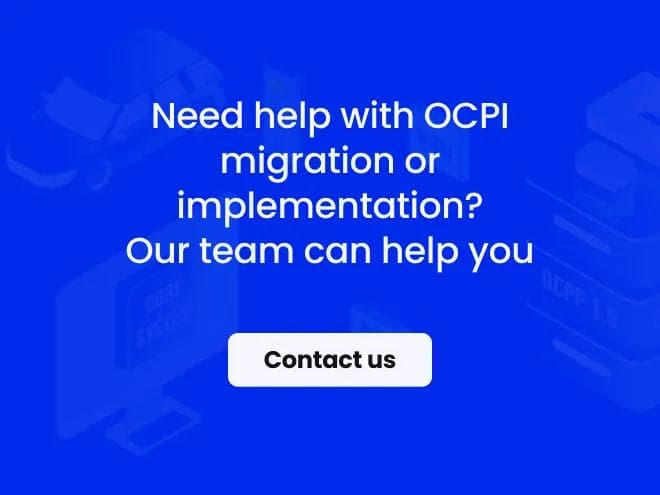For those interested in the topic of software migration (both Charge Point Operators and eMobility Service Providers), we have published a comprehensive ebook combining all the knowledge, including the business and strategic aspects. Platform Migration for EV Charging Businesses is available for free.
As we continue our blog series on EV charging software migration, this installment shifts focus from the why to the how.
In previous articles, we explored the strategic reasons behind software migration and what to consider when switching platforms. Now, we’ll guide you through the practical steps involved in migrating charging networks to a new backend system.
From evaluating new software to planning the migration method and testing for OCPP compliance, this post outlines a complete process. Plus, you’ll find a free downloadable OCPP Acceptance Testing checklist to help ensure your chargers integrate smoothly with the new system.
1. Assess and evaluate the new EV charging software
Before migrating, it’s crucial to thoroughly assess whether the new software meets the technical and operational needs of your charging network.
Ensure it supports your current setup and offers enhanced features or scalability. Focus on compatibility with your specific station models, network requirements, and business goals.
This early evaluation helps reduce risks, avoid future rework, and gain a competitive edge by selecting the most robust and future-ready platform.
2. Confirm charger compatibility and integration via OCPP testing
Make sure the new software fully supports every charging station in your network. This is critical for avoiding service disruptions post-migration.
Conduct OCPP acceptance testing to validate that all stations communicate properly with the new backend. This step helps uncover compatibility issues early, before they impact your operations.
Need a checklist? Download our free OCPP Acceptance Testing Guide (PDF) from the box on the left side of this page.
3. Migrate the software structure
Before migrating chargers, start by aligning the structural setup of both the old and new systems. This includes:
- Charging pools
- Station configurations
- Asset naming and grouping conventions
Replicating or improving the structure in the new software ensures functional continuity and avoids disruptions.
A detailed understanding of both ecosystems will help you maintain operational stability throughout the migration process and beyond.
4. Choose the right migration method for charging stations
After defining the software structure, determine how you’ll migrate each charging station to the new system.
Each station includes an OCPP URL socket that defines how it connects to the backend. Based on this setup, you’ll need to decide between:
- Remote migration, where configuration updates are pushed over the network
- On-site migration, requiring physical access to the charger
Select the most efficient method based on your infrastructure and resources. A well-planned approach minimizes service interruptions during the transition.
For example, Connected Kerb remotely migrated 9,000 charge points without any downtime. Read how they did it in our case study.
5. Use a step-by-step migration strategy
If your network includes many charging stations, a phased migration is the safest approach.
Start with a small group of chargers in a controlled environment. Test their performance with the new backend and confirm everything works as expected.
Once validated, gradually migrate additional stations in batches—using a specific identifier or key. This step-by-step process helps:
- Identify and fix issues early
- Minimize service disruption
- Keep the migration process manageable
This method reduces operational risk and ensures a smooth transition at scale.
6. Migrate OCPI connections for interoperability
An essential part of the migration process is transferring your OCPI (Open Charge Point Interface) connections.
These connections enable real-time communication between your charging platform and external partners, like roaming networks, eMSPs, and backends. Ensuring a seamless handover protects data exchange, billing, and interoperability.
This step often involves:
- Deep technical analysis
- Custom integration work
- Testing across multiple endpoints
What's next in your EV software migration journey?
Successfully migrating your EV charging network to a new software system demands more than just flipping a switch. It requires structured planning, technical validation, and phased execution, from evaluating the new platform to ensuring OCPP and OCPI compliance.
Whether you're a CPO or eMSP, using proven processes and checklists will save time, reduce downtime, and protect your business operations.
Need guidance or support? Our team is here to help you ensure a smooth and scalable transition.



